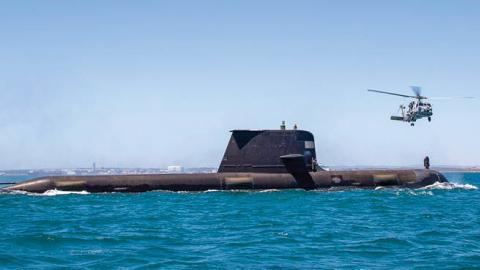When the Quad was reinstituted by Australia, the United States, Japan, and India in late 2017, Chinese Foreign Minister Wang Yi mocked it as a “headline-grabbing idea” that would “dissipate like sea foam”. Several south-east Asian countries openly expressed concern that the grouping of democracies could be provocative, divisive and challenge the cherished status of the Association of South-East Asian Nations.
Some four years later, the Quad certainly hasn’t dissipated. It is alive, thriving, and increasingly supported by ASEAN states. In the middle of a pandemic, Quad leaders met twice last year – virtually and then face-to-face. The meeting of the four foreign ministers in person on Friday is further evidence of the Quad’s significance and status.
It is common to characterise the Quad, as some of its critics still do, as just an anti-China grouping. On the face of it, it is easy to see why. The Quad’s members are those four countries that have expressed the most concern regarding Beijing’s aggressive actions, and it would not have been re-formed if they were content to accept Beijing’s false assurances of China’s peaceful and contented rise. All four have been subjected to Chinese coercion in the last two years in one form or another.
Even with respect to the impending meeting, Chinese coercion and disinformation campaigns will be on the agenda, as will persistent issues such as Beijing’s incursions into Taiwanese and Japanese territory and its illegal actions in the South China Sea. Beijing’s apparent “no limits” pact with Moscow will also be raised.
All Quad members champion the free and open Indo-Pacific, an alternative framework to China’s hierarchical and coercive approach, which seeks exclusive spheres of influence for itself. In other words, China is always squarely on the agenda.
For these reasons, the Quad is frequently bundled together with other groupings, including initiatives such as AUKUS. Both complement each other. But they are not the same. AUKUS is a military and industrial arrangement between three allies to develop the military assets needed to deter China from using force over issues such as Taiwan. It is all about developing the military power required to compel China to think twice about using force to achieve its objectives.
Broad Platform Attracts Regional Support
Many countries in the region are quietly supportive of AUKUS and fear that the initiative will not live up to its promise, rather than the intent behind it. This is because it is obvious China is the primary great-power threat to the status quo in the Indo-Pacific and the absence of a military counter by the US and its allies will imperil the entire region.
But even those regional countries reluctant to call out China as a problem have noticeably warmed to the Quad. The explanation for this is that the Quad has become a broader platform through which four formidable countries are able to offer security and public goods to the region.
Consider the outcomes of the meeting of Quad leaders last September. The four states announced additional measures to manufacture and distribute COVID-19 vaccines throughout the Indo-Pacific, including the donation of more than 1.2 billion doses.
Other initiatives included developing an advanced clean hydrogen network and value chain to lower reliance on fossil fuels, and developing open, accessible, and secure technological ecosystems and supply chains for new and critical technologies such as those relevant to 5G networks, semiconductors, biotechnology, and in space.
Since 2015, Quad members have provided tens of billions of dollars to finance infrastructure in the region.
While other countries also promise similar offerings to the region, the Quad approach is deliberately designed to reinforce and advance a set of rules and principles that are different to those favoured by China. For example, poorer nations receiving donations of vaccines need not offer political and strategic concessions in return. Infrastructure will meet environmental, labour, quality and transparency standards.
Contrast to Chinese Arrangements
Supply and value chains will be open to those who respect contractual agreements and intellectual property, in contrast to Chinese arrangements, which are typically closed to competition, non-transparent, and designed to entrench permanent advantages and privileges for Chinese entities.
This is not to say that the Quad ignores urgent and important strategic and geopolitical issues. But the growing support for it is because the grouping is finding ways to expand and normalise the application of the ‘liberal rules-based order’, and at the same time, provide solutions to an urgent regional crisis and advance the development objectives of mainly low- and middle-income countries in the Indo-Pacific.
In this sense, the grouping has an understated and nuanced strategic and diplomatic appeal in a region filled with smaller vulnerable states. Even non-democratic countries in our neighbourhood seek alternatives to Chinese approaches that lock them into unequal, unfair and oppressive agreements.
The Quad could morph into a genuine and extensive military co-operation agreement if Beijing persists with its aggressive trajectory – which seems likely. However, that is not the standard by which we should assess its current importance.
At present, the Quad gives Australia an enhanced standing and relevance in the region, serves to draw India deeper into regional affairs, helps to regulate standards and behaviour in a way that advances liberal and democratic norms, and serves as a warning to China that its strident ways will meet increasing resistance.
This is pretty good for an entity that was dismissed as nothing but froth and bubble.
Read in the Australian Financial Review















